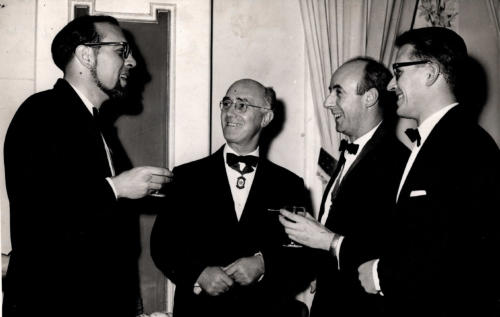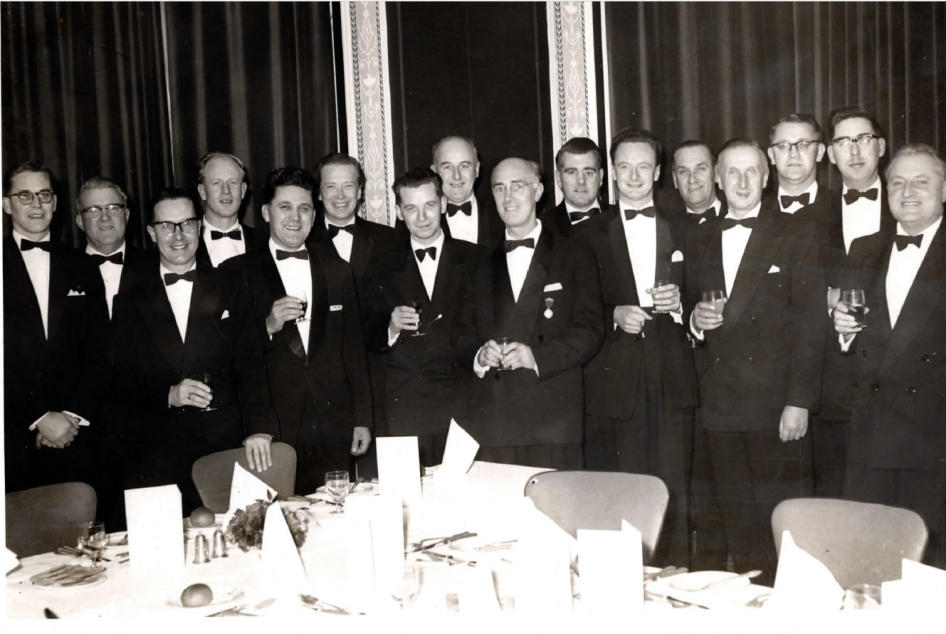


The People of Ditchburn of Lytham St Anne’s
Ken Adams
Kens account of his time with Ditchburn
I
joined
Ditchburn
Equipment
Ltd
in
1959
and
was
there
until
the
Juke
Box
business
was
sold
by
BET
to
the
Gainesmead
Group
in
the
70's.
I
joined
to
take
over
the
job
of
Mr
Ditchburn,s
daughter,
Joy,
who
was
leaving
to
get
married.
(To
Paul
Mills)
who
later
joined
the
company
as
Sales
Manager
of
the
Vending
Division.
My
job
was
to
run
the
Statistics
office,
with
3
very
able
ladies
as
staff.
At
that
time
there
were
about
1200
machines
sited
throughout
the
country
and
20
or
so
collector/engineers
looking
after
them.
We
received
their
reports
and
recorded
sites,
takings
and
service
etc.
Phonographs
(Mr
Ditchburn
never
called
them
Juke
Boxes!)
the
models
were…
(internally
numbered
within
the
company
using
the
following
system.
The Mark 2 (16 45rpm records)
The Mark 4 (a hideaway version with remote selection - and very unreliable)
The Mark 5 (100 selection Tonomat and another problem machine)
The Mark 6, (a 30 record conversion from the mark 2),
The Mark 7 (200 selection Tonomat unit that became the basis of the operation.
Later came the Mark 9 (Panoramic from Tonomat)
These
were
before
the
Seeburgs
and
then
The
Wurlitzer’s
were
imported.
Happy
days
indeed.!
The
machines
mark
numbers
were
always,
in
fact,
in
Roman
numerals.
There
was
no
Mark
I
or
III
when
I
arrived
in
1959
and
I
assume
that
they
had
been
discarded
at
that
time.
The
Mark
IV
was
definitely
the
16
selection
hideaway
model
and
the
Mark
V
the
100
selection
Tonomat.
I
only
remember
the
Mark
VI
being
known
as
that,
the
30
selection
conversion
of
the
Mark
II.
By
1959
the
were
only
45
rpm
records
used.
Although
Phonograph
was
used
generically,
all
the
Ditchburn
machines,
before
the
Seeburgs
and
Wurlitzer’s,
were
known
as
Music
Makers
with
the
appropriate
Mk
number.
The
Tonomat
200
became
the
Music
Maker
Mk
VII
etc.
Seeburgs
and
Wurlitzer’s
were
always
known
by
the
names
given
by
the
manufacturers.
By
that
time,
the
factory
was
only
being
used
for
repair
and
reconditioning.
Mr
Ditchburn's
first
task
when
he
arrived
on
a
Monday
morning,
was
to
walk
round
the
factory.
He
knew
most
people
by
name
and
was
very
highly
respected
by
the
staff.
I
was
involved
in
the
change
from
operating
to
sale
and
rental
of
machines
and
then
the
introduction
and
development
of
Back
Ground
Music
Systems.
At
the
time
of
Gainesmead, I was Sales Manager of the Background Music division.
I
am
happy
to
answer
any
questions
I
can
about
my
time
with
the
company.
I
do
have
a
couple
of
photographs with Mr Ditchburn on and will dig these out for you.
Ken Adams

Left
to
Right:
Professor
RJ
Laurence
(guest
speaker)
Mr G N Ditchburn, Mr A Jeffery, and Mr Ken Adams

